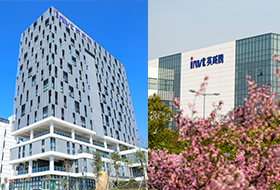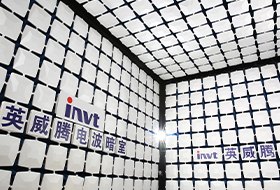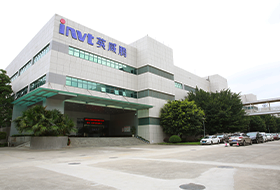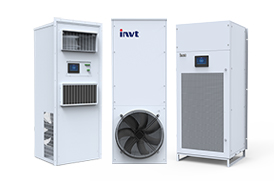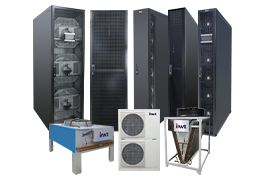Twisted Pair vs. Fiber Optic Cable Advantages and Challenges
Data transmission is the backbone of today's digital infrastructure, and it happens over cables. Whether it is a business enterprise, telecommunication network, data center, or home internet connection, the correct selection of cables plays a vital role in data transmission. Several types of cables are used for this purpose, but the most popular among them are twisted pair and optic fiber cable. This article provides insights into the benefits and challenges of each type, as well as tips for choosing the right one.
1. Introduction to twisted pair and fiber optic cables
Twisted pair and fiber optic cables have been around for a while and are used primarily in network infrastructure around the world. Despite their popularity, users are not focused on building and working. The following tips will help us understand their construction and use in different applications.
Twisted Pair: Originally developed by IBM, these cables are very similar to the coaxial cables used in cable television connections, the only difference being that they have two conductors instead of one. These cables were originally used in IBM power systems, mid-range mainframes, printers, terminals, etc. A twisted pair consists of two conductors twisted together and insulated from each other. Both conductors are used for data transmission as they operate in half-duplex mode. A protective outer sheath surrounds these conductors. The twisted pair configuration in these cables combined with SFP+ modules helps minimize crosstalk and electromagnetic interference, enabling high-speed, reliable data transmission in Gigabit Ethernet.
Fiber optic cables: These cables feature thin wires made of plastic or glass that carry pulses of light. Here, data is transmitted in the form of pulses of light. This technology ensures minimal signal attenuation over long distances. Due to their advantages, fiber optic cables have quickly become the preferred choice for long-distance communications, such as transoceanic cables.
2. Advantages and challenges of twisted pair and fiber optic cables
Now that we understand the construction and applications of these cables, let’s look at the differences between them through their challenges and benefits.
Advantages of twisted pair
High-Speed Data Transfer: Twisted pair cable can achieve data speeds up to 100Gbps, making it ideal for data centers and storage devices that require efficient and fast data transfer.
Cost-effective: Twisted pair cable is more cost-effective than fiber optic cable and many other cable types. These cables offer superior performance, comparable to fiber optic cables, but at a much lower price, making them a top choice for budget-conscious projects.
Low latency: This is a significant advantage for applications where real-time data transfer is critical, such as high-frequency applications and data centers.
Compatibility: Twisted pair can be easily integrated into any existing infrastructure due to compatibility with different interfaces such as SFP+, QFSP28, QSFP+, etc.
Ruggedness: These cables have a sturdy construction that can resist physical damage to a certain extent, making them ideal for many outdoor environments.
Challenge
Limited Bandwidth: Although these cables support high data transfer rates, they have certain bandwidth limitations. These limitations can be a disadvantage for applications that require the transmission of large amounts of data over long distances.
Limited Distance: As mentioned earlier, twisted pair cable is very similar to traditional coaxial cable, but has limitations in terms of distance. This limits their application in short-distance transmission.
Fiber optic cable advantages
High Bandwidth: These cables ensure better bandwidth than copper cables. Compared with other transmission media, optical fiber can transmit data per unit of time, which gives it significant advantages. High bandwidth availability has become a priority with the rise of digital transactions. Fiber optic cables can easily accommodate this high bandwidth availability.
Long-distance transmission: Fiber optic cables transmit light pulses faster than copper cables transmit electrical pulses. Unlike copper cables, these pulses are not susceptible to holes, making them ideal for transmission over long distances, such as undersea cables.
Resistant to electromagnetic interference: As mentioned above, fiber optic cables transmit optical signals rather than electrical pulses, which is why they are immune to electromagnetic interference (EMI) and radio frequency interference (RFI), making them ideal for electrically noisy environments.
Greater flexibility: Fiber optic cables are thinner and lighter than twisted pair and coaxial cables. Additionally, they are designed to withstand greater tensile stresses than copper cables. This makes them less susceptible to damage, and breakage and ensures shorter downtime compared to twisted pair cables. Fiber optics can be bent easily and resist more corrosive elements than copper cables.
Data security: Although copper cables, including twisted pairs, remain an integral part of traditional data networks, they do not guarantee complete data security. Fiber optic cables help keep data secure and less prone to radiating signals. They are difficult to destroy or tamper with and therefore are secure. They also provide a high degree of physical security since all electronic equipment and hardware can be installed in one location. On the other hand, in traditional infrastructure using copper cables, equipment is installed at various distributed locations in the facility due to its short-distance transmission capabilities.
Challenge
High upfront cost: Fiber optic cables are designed to overcome the challenges of copper cables, which is why they require high upfront costs. They are expensive to install and have high maintenance requirements.
3. How to choose optical fiber and twisted pair
Choosing between fiber optic and twisted pair depends on application requirements. The following tips will simplify the selection process.
Distance: If the application involves short-distance connections in a controlled environment, a twisted pair is the perfect choice. However, if you are planning a network across cities or countries, then fiber optic cables are the best choice.
Budget Constraints: As mentioned earlier, twisted pair cable is the best choice for projects with a limited budget. Although fiber optic cables may seem like a large upfront investment, they offer long-term advantages in terms of maximum uptime, high-speed data transmission, immunity to electromagnetic interference, and more. Additionally, they can be mixed with existing networks, which makes them slightly more budget-friendly.
Environmental limitations: We have to consider the environment in which these cables are used, for example, if the cables are used in a challenging environment where they are subject to physical stress, then a twisted pair would be the best choice. However, if seeking protection from electromagnetic interference, fiber optic cables are the best option.
4. Conclusion
As mentioned above, twisted pair and fiber optic cable each have advantages and challenges, but the choice will depend on the application requirements. If you are already using these cables and want to maximize the value of your investment, investing in quality equipment such as media converters that help convert electrical signals into optical signals is a must.

 networkpowersales@invt.com.cn
networkpowersales@invt.com.cn
